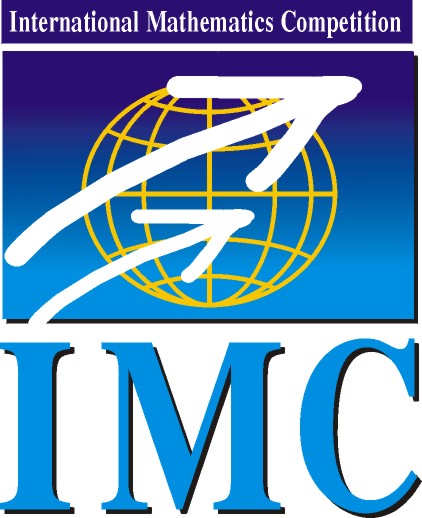
|
International Mathematics Competition
|
IMC 2026 |
| Information | Schedule | Problems & Solutions | Results | Contact |
IMC2024: Problems on Day 1
Problem 1. Determine all pairs \(\displaystyle (a,b) \in \mathbb{C} \times \mathbb{C}\) satisfying
\(\displaystyle |a| = |b| = 1 \quad \text{and} \quad a + b + a\overline{b} \in \mathbb{R}. \)
Mike Daas, Universiteit Leiden
Problem 2. For \(\displaystyle n=1,2,\ldots\) let
\(\displaystyle S_n = \log\left( \sqrt[n^2]{1^1\cdot 2^2\cdot\ldots\cdot n^n}\right) - \log (\sqrt{n}), \)
where \(\displaystyle \log\) denotes the natural logarithm. Find \(\displaystyle \mathop{\lim}\limits_{n\to\infty} S_n\).
Sergey Chernov, Belarusian State University, Minsk
Problem 3. For which positive integers \(\displaystyle n\) does there exist an \(\displaystyle n\times n\) matrix \(\displaystyle A\) whose entries are all in \(\displaystyle \{0,1\}\), such that \(\displaystyle A^2\) is the matrix of all ones?
Alex Avdiushenko, Neapolis University Paphos, Cyprus
Problem 4. Let \(\displaystyle g\) and \(\displaystyle h\) be two distinct elements of a group \(\displaystyle G\), and let \(\displaystyle n\) be a positive integer. Consider a sequence \(\displaystyle w=(w_1,w_2,\ldots)\) which is not eventually periodic and where each \(\displaystyle w_i\) is either \(\displaystyle g\) or \(\displaystyle h\). Denote by \(\displaystyle H\) the subgroup of \(\displaystyle G\) generated by all elements of the form \(\displaystyle w_{k}w_{k+1}\ldots w_{k+n-1}\) with \(\displaystyle k\geq 1\). Prove that \(\displaystyle H\) does not depend on the choice of the sequence \(\displaystyle w\) (but may depend on \(\displaystyle n\)).
Ivan Mitrofanov, Saarland University
Problem 5. Let \(\displaystyle n>d\) be positive integers. Choose \(\displaystyle n\) independent, uniformly distributed random points \(\displaystyle x_1,\ldots,x_n\) in the unit ball \(\displaystyle B\subset \mathbb{R}^d\) centered at the origin. For a point \(\displaystyle p\in B\) denote by \(\displaystyle f(p)\) the probability that the convex hull of \(\displaystyle x_1,\ldots,x_n\) contains \(\displaystyle p\). Prove that if \(\displaystyle p,q\in B\) and the distance of \(\displaystyle p\) from the origin is smaller than the distance of \(\displaystyle q\) from the origin, then \(\displaystyle f(p)\geq f(q)\).
Fedor Petrov, St Petersburg State University
© IMC